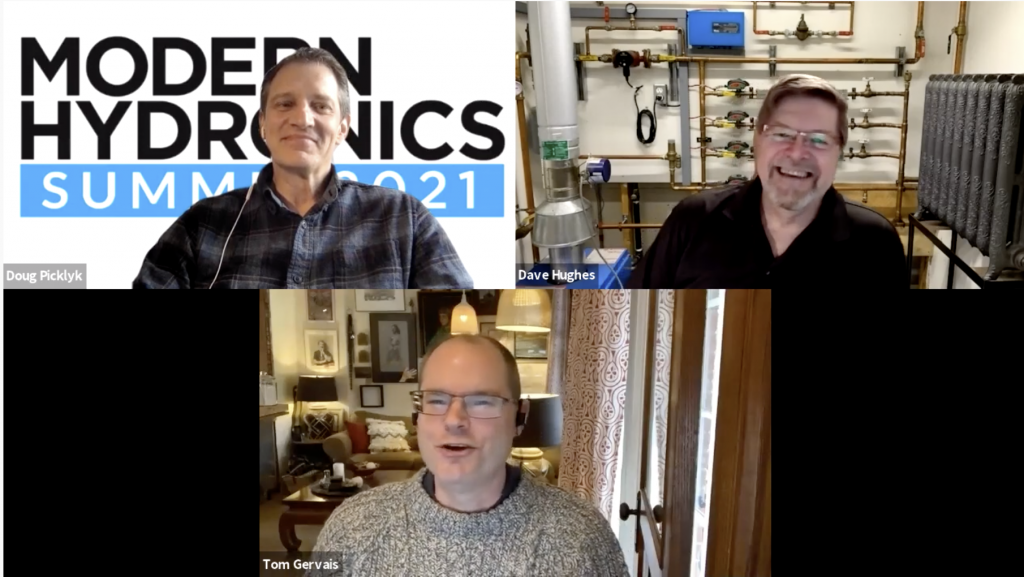
Preparing for Changes to Canada’s Energy Efficiency Act
July 20, 2021 | By Logan Caswell
The amendment will update testing and reporting standards for four particular product categories: gas fireplaces, gas boilers, gas furnaces and oil-fired boilers.

In this episode of 30 Mechanical Minutes HPAC magazine chats with two members of the Canadian Hydronics Council, Dave Hughes and Tom Gervais, to explain the details of the Natural Resources Canada (NRCan) Amendment 15 to Canada’s Energy Efficiency Act, first published in June 2019.
Residential Changes
Hughes, a technical advisor with the Canadian Institute of Plumbing and Heating (CIPH), explained the changes regarding residential, or household, appliances. A key change is the updated Minimum Energy Performance Standard levels (MEPS) for a range of HVAC product categories.
The affected products include electric furnaces, gas and oil boilers, gas fireplaces, gas furnaces (including mobile homes), heat recovery ventilators (HRV) and tankless water heaters. The amendment will introduce more stringent MEPS and update testing and reporting standards for four particular product categories: gas fireplaces, gas boilers, gas furnaces and oil-fired boilers.
Household gas boilers, both hot water and steam boilers using propane or natural gas manufactured after July 1, 2023 with an input rating less than 300,000Btu/h will now have MEPS set at the condensing technology level equivalent to the current ENERGY STAR rating of 90% annual fuel utilization efficiency (AFUE).
“The days of non-condensing boilers are coming to an end, as these regulations allow for only condensing appliances” says Hughes.
Commercial Updates
Tom Gervais then explained the impact of Amendment 15 on commercial installations. Gervais, a mechanical engineer and director of specification and product development with LAARS Heating Systems, noted that commercial boilers have never been regulated in Canada at a federal level. However, starting Jan.1, 2025, any appliance with greater than 300,000 Btu/h up to 10 million Btu/h will have to be condensing.
The set date represents the production date of the piece of equipment. So, if contractors, wholesalers or retailers have items already in stock and manufactured before this date, they are still able to sell them. However, anything manufactured after Jan. 1, 2025 will have to be condensing.
“To me that’s a big change,” says Gervais. “We (as industry watchers) do see that energy costs are an important thing for stakeholders—for people who are residents in buildings or the property managers etc. I think, generally speaking, as Canadians we do like to do the right thing, and we do like to design for efficiency and for optimizing our operating costs, and condensing boilers often contribute to that.”
However, Gervais points out condensing boilers only condense if they operate at temperatures which are conducive for condensing. He went on to say skilled trades in the industry, licensed professionals, practicing designers etc. should ensure they maximize the efficiency of these boilers for the benefit of the customer. Unfortunately, these new boilers are more expensive than their predecessors because of the increased cost of the materials used in their manufacture.
What contractors need to know?
The upcoming changes will present challenges to retrofitting systems in older buildings. For example, a retrofit with a mechanical room in the basement will need venting systems to be replaced. This is because condensing boilers cannot reuse an existing Category 1 B-vent chimney; the flu gas is potentially going to condense and corrode an existing chimney. All the venting systems need to be changed to a certified vent system.
Gervais also stressed that vent length is possibly the biggest issue people need to consider. “The maximum vent length is limited, and installers need to comply with the manufacturer’s specifications,” said Gervais. “Designers and contractors need to consider these things before they change the systems in a retrofit project.”




